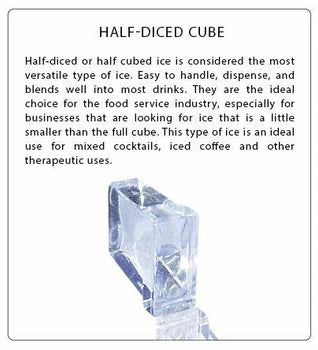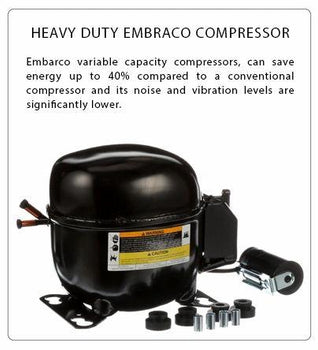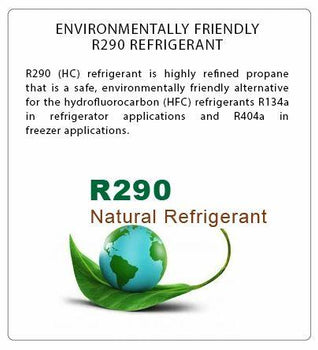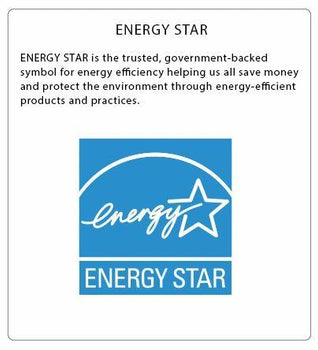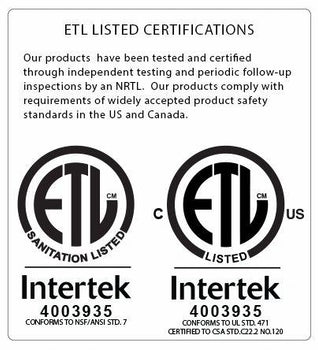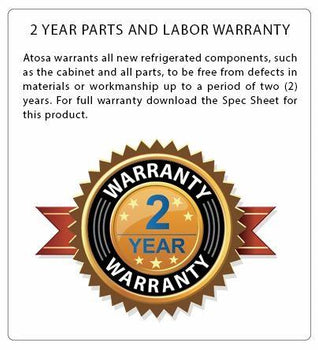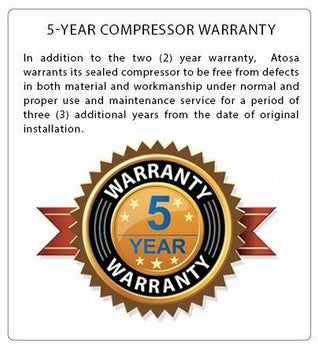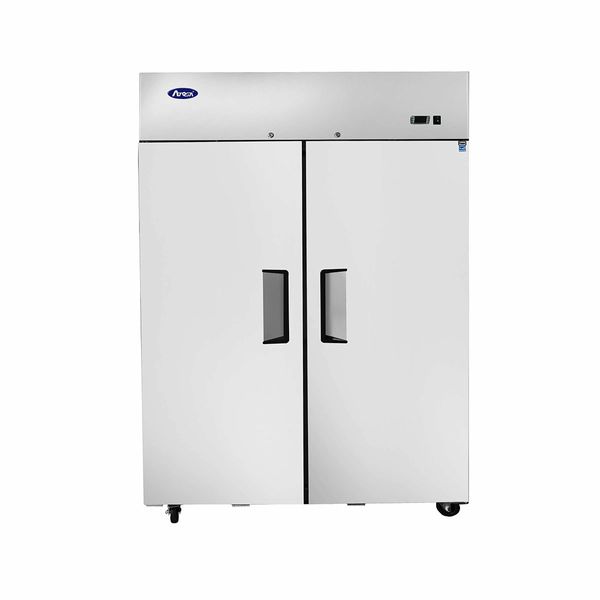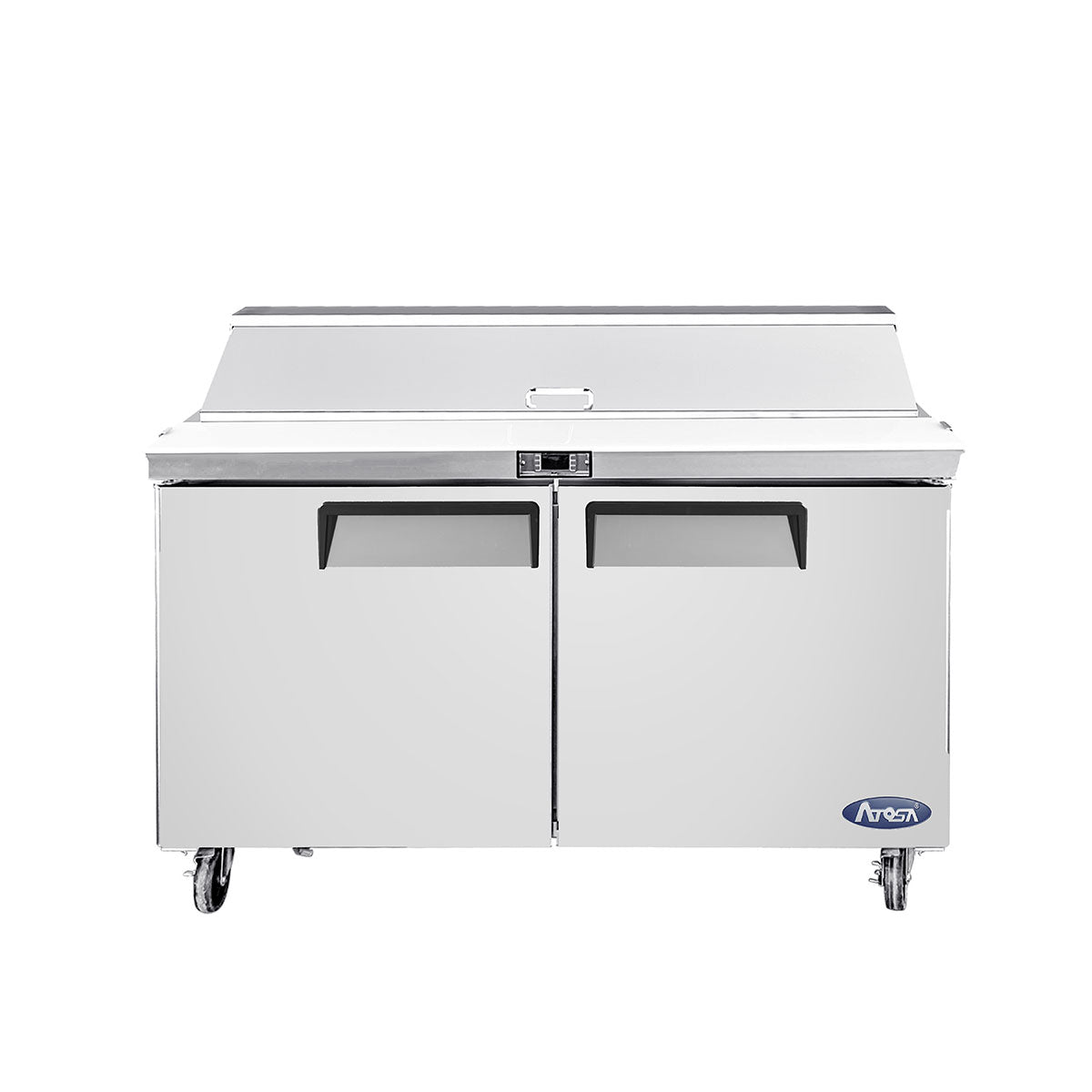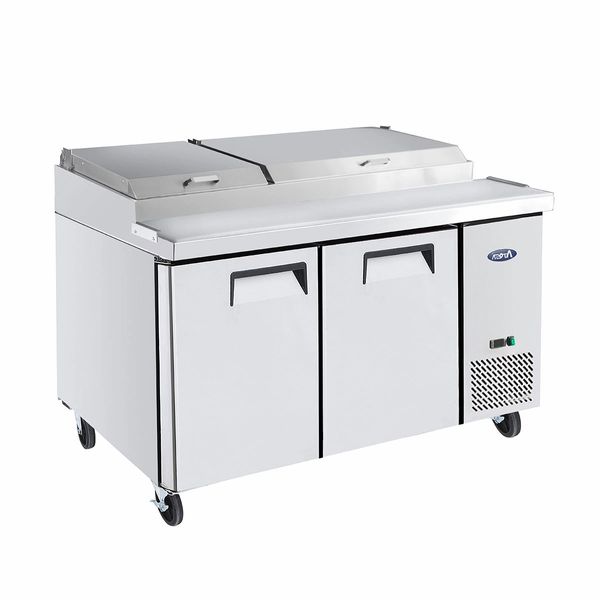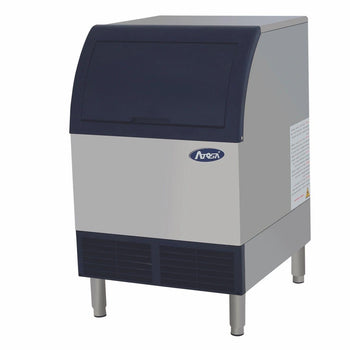
Atosa USA YR140-AP-161 142 lb Air-Cooled Self Contained Built in Storage Bin Cubed Ice Machine
Atosa USA YR140-AP-161 142 lb Air-Cooled Self Contained Built in Storage Bin Cubed Ice Machine with 3M Water filtration system and Cartridge, ICE120-S
The ice making process requires the movement of R290 environmentally refrigerant through a network of tubing while sending it through a continuous cycle of condensation and expansion. Condensation is accomplished by forcing the refrigerant through a series of narrow tubes while expansion is achieved by releasing the mixture into larger tubes.
When compressed, the refrigerant pressure is increased and an increase in temperature also results. As this hot refrigerant continues its cycle through the narrow coils, it loses heat to the cooler, outside air. This cooling causes the refrigerant to condense into a liquid. The compressed liquid is then passed through an expansion valve at which point it evaporates and becomes a gas. The evaporation process draws in the heat energy from the copper tubing and the air surrounding the refrigerant thereby cooling the tubing. Sandwiched between two plates, the cool temperature from the tubing is transferred to the evaporator... this lays the groundwork for making ice!
Ice Machine Freeze Cycle
Once the evaporator has been cooled, water supplied from a reservoir is run over the evaporator surface and gradually begins to freeze. Because pure water freezes first and because water is constantly flowing over the surface of the evaporator, impurities are washed away while pure water is left behind to freeze. This ice forming process results in the formation of a crystal-clear cube.
Ice Machine Harvest Cycle
When the water level in the reservoir reaches a certain level, the ice making process is terminated. A valve is then opened which changes the path of the refrigerant. Hot refrigerant gas from the compressor now bypasses the narrow condensing tubes and is instead routed directly to the evaporator. The hot temperature from the tubing is transferred to the evaporator, which loosens the ice cubes. Because the evaporator is mounted vertically, cubes are free to fall into the bin below.
This freezing and harvesting cycle will continue until the built in ice bin control senses that enough ice has been produced.
Older ice machines are usually wracked with problems particularly those that have been operated with hard water. The compartment type cube makers very often stick and do not allow the cubes to fall free and the cascading units become pitted, causing the same result.
Atosa USA YR140-AP-161 142 lb Air-Cooled Self Contained Built in Storage Bin Cubed Ice Machine
- Up to 142 lbs production ice machine (per 24 hrs)
- Built-in storage capacity of 88 lbs
- Durable Stainless Steel Exterior
- Slanted black plastic bin door
- Ice scoop included
- Height includes leg levelers
- Air cooled condenser
- For freestanding or built-in applications
- Requires use of a drain. Water filter recommended
- NSF listed
- Removable air filter
- Power switch accessible without panel removal
ICE MAKER UNIT SPECIFICATIONS:
Ice Maker with Bin, cube-style, air-cooled, self-contained condenser, 23.7"W x 28.5"D x 38.6"H, production capacity up to 142-lb/24 hours, 88 lb storage capacity, stainless steel exterior, 6" adjustable legs, includes: ice scoop, removable air filter, includes: 3M™ ICE120-S Water Filter System, R290 Hydrocarbon refrigerant, 115v/60/1-ph, 3.1 amps, cETLus, ETL-Sanitation, NSF (drain required).
Ice Maker Dimensions:
38.6(h) x 23.7(w) x 28.5(d) inches.

